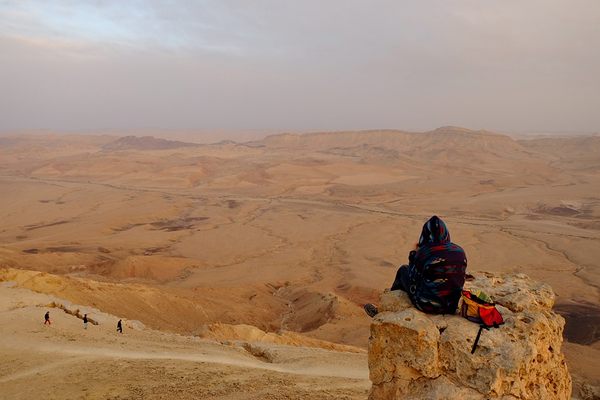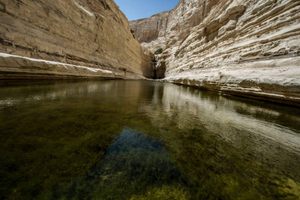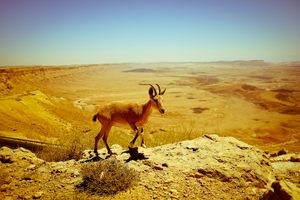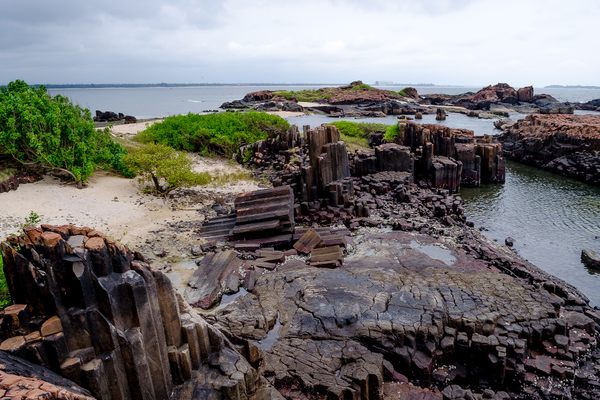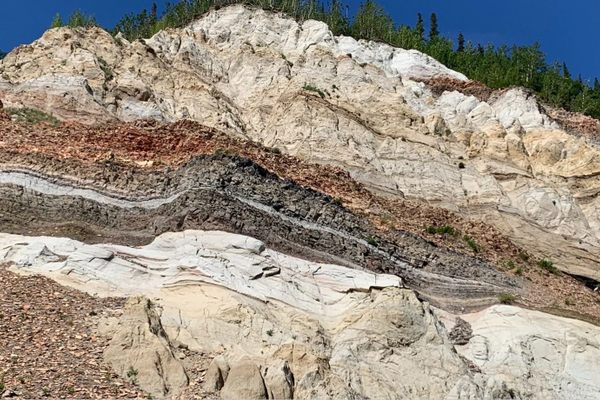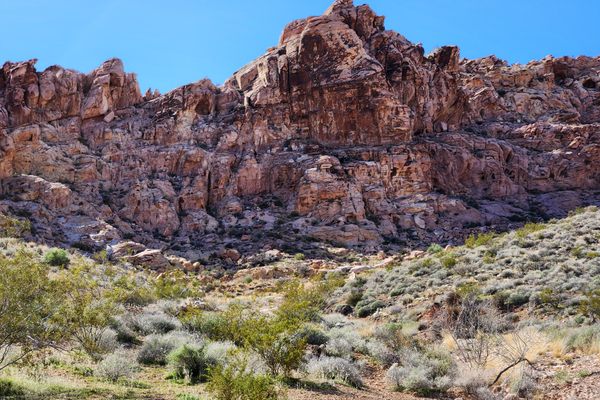About
Makhtesh Ramon is the largest of Israel’s bizarre geological formations called makhteshim (literally, “craters”).
Thought for many years to be an impact crater, the result of a meteor colliding with the deserts of southern Israel, geologists began noticing inconsistencies between the makhtesh and normal crater formations. After a long and trying investigation, the culprit was revealed: erosion.
Thousands of years ago, the deserts of southern Israel were at the bottom of a vast, primordial sea. As it dried, the hard outer crust of the sea bottom began to wear away, exposing its soft interior. This interior eroded quickly until the tough crust collapsed, creating the crater-like valley we see today. Since then, two seasonal rivers, Nahal Ramon and Nahal Ardon, have formed every rainy season, further carving away at the rock and giving Ramon its distinctive heart shape. Today, Makhtesh Ramon, at 40 km long and 2-10 km wide, has been made into Israel’s largest national park, the Ramon Nature Reserve. Expeditions can be launched from the valley’s only town, Mitzpe Ramon (“Ramon Observation Point”), on the northern rim, although visitors should be mindful to stay out of the incredible mid-day heat. Rappelling is occasionally done in the cliffs directly behind the Visitors Center in Mitzpe Ramon. Make sure to join when there's one scheduled during your visit!
Makhtesh Ramon also has some of the most intriguing biodiversity in the Israeli desert. Ibex, porcupines, gazelles, wild donkeys, hyaenas, hyraxes, and a few Arabian Leopards all live in Makhtesh Ramon, among countless smaller lizards and rodents.
At night, hikers should take advantage of one of the many hotels established by local Bedouin herders, where visitors can sleep in hand-woven tents while enjoying world-renowned Bedouin black coffee and the cool desert air. Staying at least one night is a must – far from the city lights, the stars in Makhtesh Ramon has been said to be so brilliant that they can “restore your faith in God.”
Other must-sees include Giv’at Ga’ash, a pitch-black 100-million-year-old extinct volcano arising from the crater floor, a few scattered Nabatean ruins, and Wadi Nikarot (“Grotto Riverbed”), a dry riverbed flanked by spectacular cave formations dug out by the fast-moving rivers of spring, and HaMinsara (the carpentry), an area where the rocks once formed hexagonal pillars, most of which have collapsed and are scattered across the surrounding area appearing like wood chips (hence the name). But hike at your own risk – flash floods have been known to kill inattentive walkers.
Related Tags
Know Before You Go
In recent years, Ramon Crater is receiving new attention due to the sad and touching story of Ilan Ramon (who was named after the Makhtesh). Ramon was an IAF fighter pilot and the first Israeli astronaut. In January 2003, he boarded together with his six American colleagues the Columbia space shuttle. After 16 days in space, on February 1, 2003, the Columbia disintegrated upon re-entering Earth’s atmosphere, killing all seven crew members.
In memory of Ilan and his six friends, a very special memorial site was set up on the edge of the crater's cliff. The specific spot was chosen because it is overlooking seven black basalt hills sticking out of the bright crater bottom. Each hill was named after one of the seven crew members of the Columbia. The vista is breathtaking and can be reaching only by foot. The path is about one mile long and starts at the Mount Ramon parking area.
Community Contributors
Added By
Published
April 7, 2010





